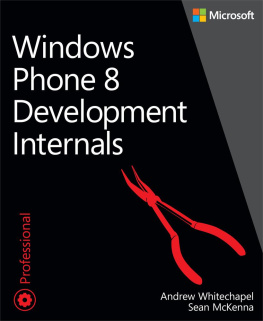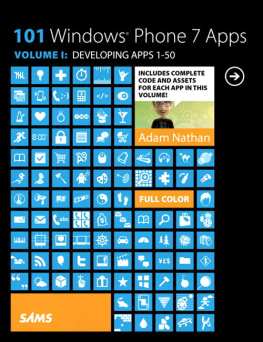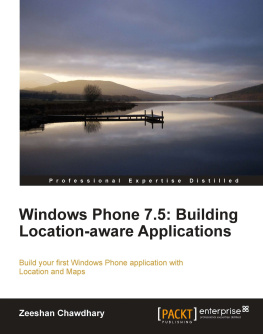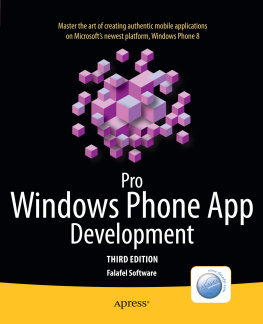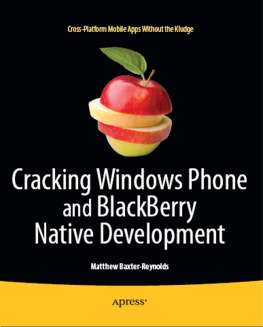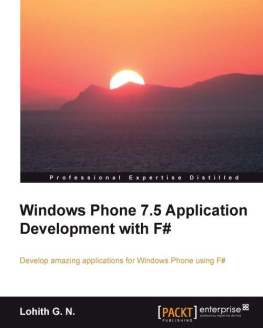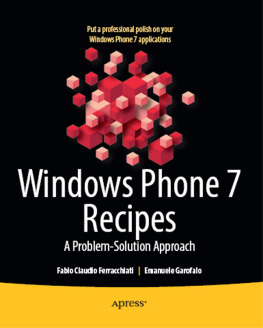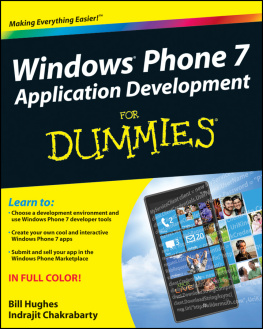Whitechapel A. - Windows Phone 8 Development Internals
Here you can read online Whitechapel A. - Windows Phone 8 Development Internals full text of the book (entire story) in english for free. Download pdf and epub, get meaning, cover and reviews about this ebook. genre: Computer. Description of the work, (preface) as well as reviews are available. Best literature library LitArk.com created for fans of good reading and offers a wide selection of genres:
Romance novel
Science fiction
Adventure
Detective
Science
History
Home and family
Prose
Art
Politics
Computer
Non-fiction
Religion
Business
Children
Humor
Choose a favorite category and find really read worthwhile books. Enjoy immersion in the world of imagination, feel the emotions of the characters or learn something new for yourself, make an fascinating discovery.
- Book:Windows Phone 8 Development Internals
- Author:
- Genre:
- Rating:4 / 5
- Favourites:Add to favourites
- Your mark:
Windows Phone 8 Development Internals: summary, description and annotation
We offer to read an annotation, description, summary or preface (depends on what the author of the book "Windows Phone 8 Development Internals" wrote himself). If you haven't found the necessary information about the book — write in the comments, we will try to find it.
. .
Build and optimize Windows Phone 8 apps for performance and securityDrill into Windows Phone 8 design and architecture, and learn best practices for building phone apps for consumers and the enterprise.Written by two senior members of the core Windows Phone Developer Platform team, this hands-on book gets you up to speed on the Windows 8 core features and application model, and shows you how to build apps with managed code in C# and native code in C++. Youll also learn how to incorporate Windows Phone 8 features such as speech, the Wallet, and in-app purchase.Discover how to:
Create UIs with unique layouts, controls, and gesture support
Manage databinding with the Model View ViewModel pattern
Build apps that target Windows Phone 8 and Windows Phone 7
Use built-in sensors, including the accelerometer and camera
Consume web services and connect to social media apps
Share code across Windows Phone 8 and Windows 8 apps
Build and deploy company hub apps for the enterprise
Start developing games using Direct3D
Test your app and submit it to the Windows Phone StoreTable of Contents:
Part I: Core Features.
Vision and architecture.
App model and navigation.
UI visuals and touch.
Data binding and MVVM.
Phone and media services.
Sensors.
Web connectivity.
Web services and the cloud.
Background agents.
Local storage and databases.Part II: Windows Phone 7 to Windows Phone 8.
App publication.
Profiling and diagnostics.
Porting to Windows Phone 8 and multitargeting.
Tiles and notifications.
Contacts and calendar.
Camera and photos.
Networking and proximity.
Location and maps.Part III: New Windows Phone 8 Features.
Speech.
The Wallet.
Monetizing your app.
Enterprise apps.Part IV: Native Development and Windows Phone 8 convergence.
Native development.
Windows 8 convergence.
Games and Direct3D. iPAD Amazon Kindle, PC , Cool Reader, Calibre, Adobe Digital Editions
Whitechapel A.: author's other books
Who wrote Windows Phone 8 Development Internals? Find out the surname, the name of the author of the book and a list of all author's works by series.

